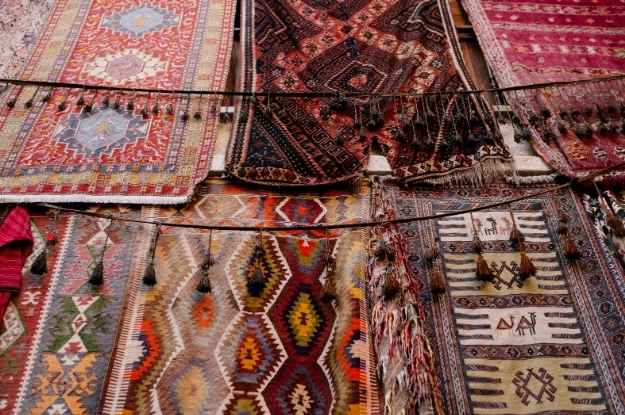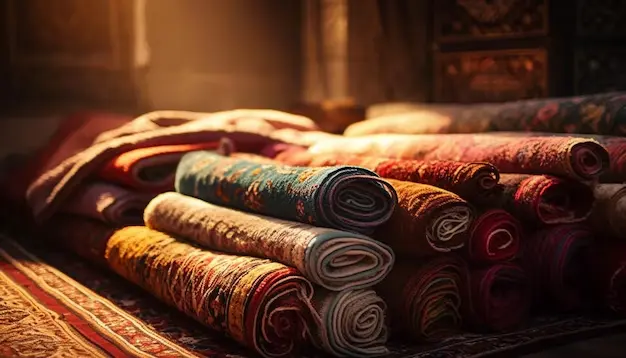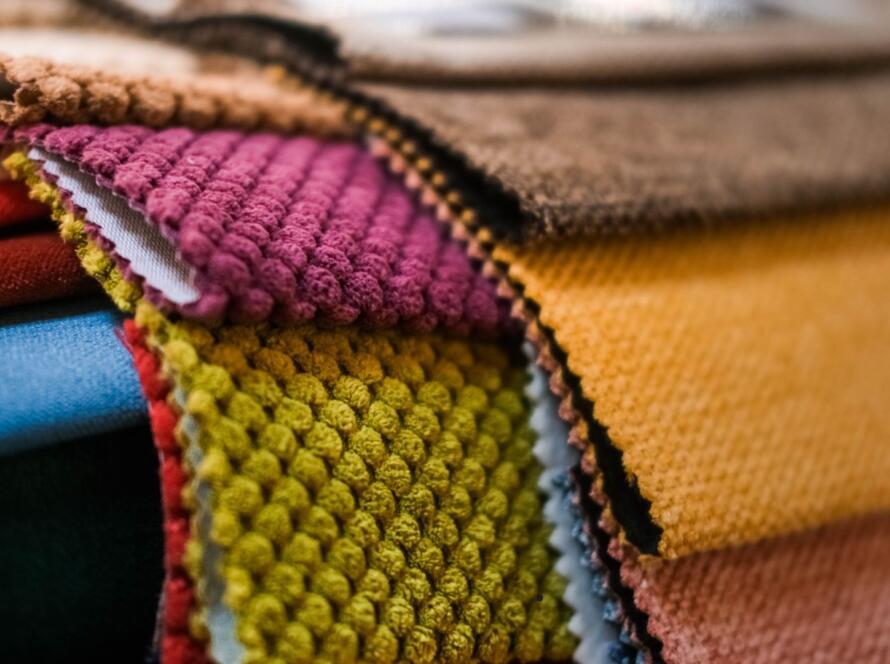
The rug industry, like many sectors in the home decor market, has seen significant shifts in recent years. These changes are largely driven by evolving consumer preferences. Whether it’s the rising demand for sustainable products, the shift towards online shopping, or the increasing importance of customization, consumers are increasingly shaping the way rug manufacturers and retailers do business.
In this article, we will explore how these consumer trends are reshaping the rug industry, backed by data and insights.
1. Sustainability is a Key Factor
In today’s world, more consumers are paying attention to the environmental impact of their purchases. A growing number of people are choosing eco-friendly, sustainable products, and the rug industry is no exception.
According to a study by Nielsen, 73% of global consumers say they would definitely or probably change their consumption habits to reduce their environmental impact. This trend is especially prominent among millennials and Gen Z, who are willing to pay more for sustainably sourced products.
In response, many rug manufacturers are now focusing on producing rugs made from natural materials such as wool, cotton, jute, and bamboo. Additionally, there is an increasing interest in recycled materials. Brands that offer rugs made from recycled fibers or upcycled materials are gaining popularity as they align with consumers’ growing eco-conscious mindset.
Moreover, rugs that are certified by environmental organizations, like those with Good Weave or Global Organic Textile Standard (GOTS) certifications, are highly sought after. These certifications not only ensure the rugs are made using environmentally friendly processes but also verify that they are produced under fair labor conditions.
2. Shift Toward Online Shopping
The digital era has fundamentally changed the way people shop, and the rug industry is seeing the effects of this transformation. The e-commerce rug market is growing rapidly, and many consumers now prefer to browse and buy rugs online instead of visiting physical stores.
According to a report from Statista, the global online home decor market, which includes rugs, was valued at $622 billion in 2021 and is expected to grow at a compound annual growth rate (CAGR) of 8.5% from 2022 to 2028.
Several factors are driving the growth of online rug sales:
- Convenience: Consumers appreciate the ease of shopping from home, having access to a wide range of styles, sizes, and colors without visiting multiple stores.
- Enhanced Visualization Tools: Technologies like augmented reality (AR) allow customers to virtually “place” a rug in their home to see how it will look before making a purchase. This helps overcome the challenge of not physically seeing or feeling the rug.
- Customer Reviews and Transparency: Online platforms provide customers with access to reviews and detailed product descriptions, which help build trust in their purchases.
However, for businesses, this shift means adapting to a highly competitive online space. Companies that provide a seamless shopping experience, fast delivery, and generous return policies are more likely to capture and retain customers.
3. Customization and Personalization Are Trending
Consumers today are looking for ways to make their homes feel unique and personal. As a result, the demand for custom-made and personalized rugs is on the rise. Rather than settling for mass-produced designs, customers want to select colors, patterns, and sizes that reflect their personal tastes and fit their specific spaces.
According to a report by Research and Markets, the global custom-made rug market is expected to grow at a CAGR of 5.6% from 2023 to 2027.
To meet this demand, many rug companies are offering customization options where customers can choose their own materials, patterns, or even design their own rugs. Customization not only allows for personalization but also encourages customer engagement, which can lead to higher customer satisfaction and brand loyalty.
In addition, many consumers are drawn to handmade rugs, which carry a sense of individuality and craftsmanship. Handmade rugs are often seen as a luxury, and people are willing to invest in them due to their uniqueness and durability.
4. Rise of Minimalism and Neutral Colors
In terms of design, the minimalist trend is making waves across the rug industry. As people aim to declutter their homes and create calm, peaceful environments, minimalistic rug designs featuring clean lines, simple patterns, and neutral colors have become increasingly popular.
According to a survey by Houzz, 48% of homeowners in the U.S. prefer neutral color schemes when redecorating their homes. This preference is reflected in rug sales, with colors such as beige, gray, and off-white being highly sought after.
Minimalist rugs, which often use muted tones and simple designs, fit well with the overall trend towards modern, uncluttered living spaces. They offer a versatile base that complements a variety of interior styles, from contemporary to Scandinavian.
However, while neutral tones are in demand, there is also a parallel trend towards “statement rugs” in certain segments of the market. These bold, colorful, and patterned rugs serve as the focal point of a room, particularly in eclectic or bohemian-inspired homes.
5. Affordability Without Compromising on Quality
Affordability continues to be a significant factor for many consumers, particularly as inflation impacts discretionary spending. According to a report by McKinsey, 39% of U.S. consumers are cutting back on discretionary spending, which includes home decor items like rugs. However, consumers are still looking for high-quality products that offer value for money.
This has led to the growth of mid-range rug brands that offer stylish, durable rugs at affordable prices. Brands that can strike a balance between affordability and quality are likely to capture a large share of the market. In response to this trend, many companies are expanding their offerings to include budget-friendly options without compromising on design or durability.
Additionally, there has been a surge in rug sales during online sales events, such as Black Friday or Amazon Prime Day, where customers can find quality rugs at discounted prices.
6. Emphasis on Durability and Easy Maintenance
As consumers become more practical in their purchasing decisions, they are looking for rugs that can withstand daily wear and tear. This trend is particularly evident among families with children and pet owners.
A survey by One Poll found that 67% of pet owners say that having easy-to-clean furniture and rugs is a top priority when shopping for home decor. Rugs made from durable, stain-resistant, and easy-to-clean materials, such as synthetic fibers like nylon or polypropylene, are gaining popularity.
In response, many rug manufacturers are now promoting features like stain resistance, machine washability, and pet-friendly designs to cater to these consumers.
Conclusion
Consumer preferences are reshaping the rug industry in profound ways. Sustainability, online shopping, customization, minimalist designs, affordability, and durability are just some of the key trends driving the market forward. As consumers continue to prioritize eco-friendly products, convenience, and personalization, rug manufacturers and retailers must stay agile and adapt to these evolving demands to stay competitive.
By staying attuned to what consumers want, companies in the rug industry can not only survive but thrive in this dynamic market.
FAQs on Consumer Preferences Shaping the Rug Industry
- How is sustainability influencing the rug industry?
Sustainability is becoming a top priority for consumers, with many seeking eco-friendly rugs made from natural or recycled materials. Certifications like Good Weave and GOTS ensure rugs are produced using environmentally responsible practices and fair labor conditions, which has led manufacturers to adapt their production methods accordingly.
- What materials are most popular in sustainable rugs?
Natural materials like wool, cotton, jute, and bamboo are highly sought after in the sustainable rug market. Recycled materials and upcycled fibers are also gaining popularity as consumers look for eco-friendly options that minimize environmental impact.
- How has online shopping affected the rug industry?
The shift to online shopping has transformed how rugs are sold, with consumers appreciating the convenience of browsing and purchasing rugs from home. Enhanced visualization tools, like augmented reality (AR), and customer reviews also play a major role in driving online sales.
- What are the benefits of customization in the rug market?
Customization allows consumers to create personalized rugs tailored to their tastes, spaces, and design preferences. This trend is growing as more people look to express individuality in their home decor, driving manufacturers to offer a wider range of customizable options.
- Why are minimalist rug designs so popular?
Minimalist designs align with the broader trend toward decluttering and creating calm, serene living spaces. Simple patterns and neutral tones are highly versatile and fit into various interior styles, making them a popular choice for many homeowners.
- How are companies balancing affordability and quality in the rug market?
To meet consumer demand for budget-friendly yet high-quality rugs, many manufacturers are focusing on mid-range products that offer durability, stylish designs, and affordability. This trend has led to the growth of brands offering quality rugs at reasonable prices without compromising on materials or craftsmanship.
- Why is durability becoming a key factor for rug buyers?
Durability is increasingly important, especially for families and pet owners who need rugs that can handle daily wear and tear. Rugs made from materials like nylon or polypropylene that offer stain resistance and easy maintenance are in high demand.
References:
- Nielsen. (2022). “The Rise of Sustainable Consumers: Understanding Their Attitudes and Behaviors.”
- Statista. (2021). “Online Home Décor Market Size Worldwide.”
- Research and Markets. (2023). “Custom-Made Rugs Market Report.”
- Houzz. (2023). “U.S. Home Design Trends.”
- McKinsey & Company. (2023). “U.S. Consumer Spending and Inflation Insights.”
- OnePoll. (2021). “Pet Owners’ Shopping Habits for Home Décor.”




